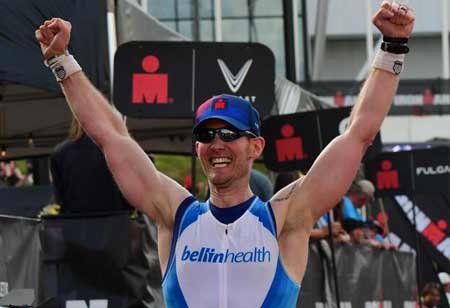Thank you for Subscribing to Healthcare Business Review Weekly Brief

Reimagining Cardiac Wellness: A Collective Reset for a Healthier Future
Healthcare Business Review
Cleven invites us to rethink heart health—not as something we fix when broken, but something we nurture every day.
Heart disease remains the leading cause of death globally and in the United States, affecting both men and women. Despite extraordinary advances in treatment, the staggering toll on lives and health systems persists. It’s time we rethink our approach—not just by treating disease, but by cultivating wellness from the very beginning.
Our hearts beat approximately 100,000 times a day—over 36 million times each year. This remarkable organ powers every aspect of our lives, yet we often take it for granted until it’s too late. True cardiac health requires more than medicine; it demands a cultural shift from reactive treatment to proactive, holistic prevention.
The Joy of Movement
Physical activity isn’t just exercise— it’s a celebration of life. The joy of movement should be foundational to our daily routine. Whether it’s walking, biking, dancing, or hiking, movement nourishes the body and lifts the spirit. Imagine a society where fitness is not an obligation but an integrated part of living—where physical fitness assessments become part of annual health checkups and incentives reward healthy habits and personal progress.
Primary Prevention Starts at Birth
Cardiac wellness begins with our first bite. From infancy, natural, colorful foods—fruits, vegetables, whole grains, lean proteins and healthy fats— should fill our plates. Processed foods, sugar-laden snacks and salt-heavy meals give way to meals that heal, not harm. Sugary beverages step aside for water and mindful nutrition becomes second nature.
Imagine a society where fitness is not an obligation but an integrated part of living
Schools, workplaces and homes become environments that prioritize nourishment over convenience. Community gardens flourish in place of fast-food chains. Children learn the colors of fruits and vegetables before the colors of candy wrappers. Fresh produce becomes as commonplace as smartphones.
A Culture That Moves Together
In this vision of wellness, cities evolve. Cars no longer dominate the landscape. Instead, infrastructure supports safe, state-funded walking and cycling as the primary forms of transportation. Sidewalks, bike lanes and greenways stretch into every neighborhood, making movement accessible, enjoyable and safe for all ages.
Fitness becomes a shared experience; community races replace sedentary weekend habits and dance halls, rollerblade rinks and recreation centers fill the role once occupied by bars. Workplaces transform, receiving report cards based on how well they support employee health through access to fitness and nutritious food. Corporate teams proudly participate in local 5Ks, spreading wellness one step at a time.
Fitness Professionals as Wellness Pillars
In this reimagined society, Clinical Exercise Physiologists, dietitians and certified fitness professionals play pivotal roles. No longer reserved for elite athletes or post-surgical patients, these experts become embedded in communities, schools and healthcare settings. They coach, guide and inspire individuals to develop habits that prevent disease and support lifelong wellness.
Playgrounds evolve into fitness hubs where equipment supports activity for every age and ability. Spiritual spaces trade doughnuts for tai chi, walks and chair yoga—honoring the body as well as the soul. Childcare centers regularly visit nursing homes, fostering intergenerational joy and movement that rejuvenates young and old alike.
The Results of a Wellness Revolution
As this cultural shift takes hold, the impact is profound. Cardiologists see fewer patients whose conditions stem from sedentary lifestyles, poor diet and preventable chronic diseases. Their work turns increasingly toward managing genetic conditions, age-related cardiac issues and rare cases—proof of a successful prevention-first society.
This reimagined world does not rely solely on willpower or individual change; it thrives on structural support and shared values. It asks us to care not only for ourselves but for our communities. It reminds us that every heartbeat counts—and that a healthier future is within reach if we dare to reset, reconnect and reimagine what cardiac wellness truly means.









